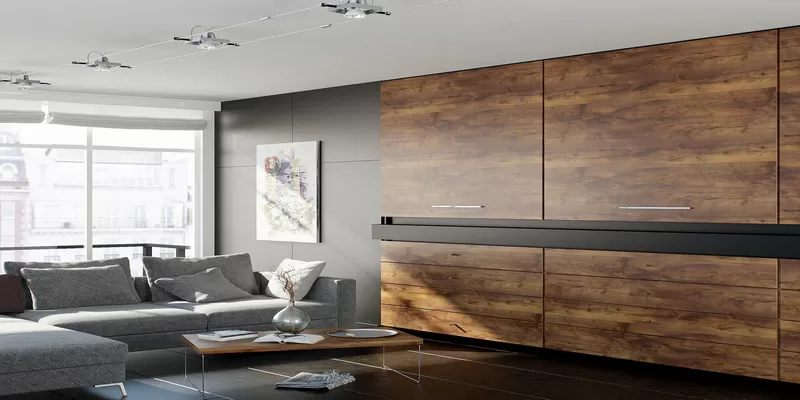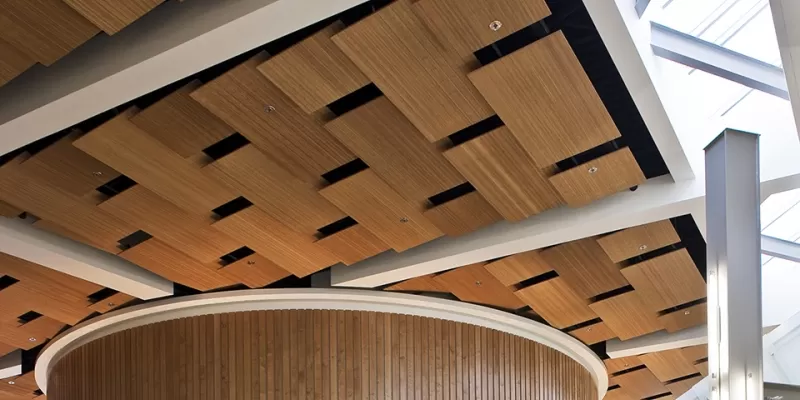The level of quality of floor finishing depends to a large extent on the type of finishing material chosen. Plywood and chipboard have been holding the palm for a long time. How to assess the relevance of the use of a particular material? To do this, you need to have an idea about the features of each. What is better? Our experts are ready to answer this question.
Features of finishing materials
Chipboard

Chipboard or chipboard is a mixture of wood chips and synthetic resins obtained by the hot method (by exposing the crushed raw materials to a press and high temperature). Most often, this mixture is a waste of expensive lumber or culling of valuable wood. DPS can be represented by 2 options: with a smooth edge and with a tongue and groove fastening system. The latter option is most often characterized by increased moisture resistance and is often used to decorate the surface of the subfloor / finishing floor.
Chipboard includes many varieties, among which the most common, perhaps, can be called laminated. But if we are talking about leveling horizontal surfaces, the best option would be raw chipboard (with / without sanding). Despite their relatively low strength, chipboard sheets are suitable for rough flooring, as they have good sound and heat insulation performance and exhibit surprisingly good bending strength.
ON A NOTE. Strict precautions must be observed when working with chipboard. In the process of sawing them, toxic dust is formed — the use of a respirator is mandatory to avoid an allergic reaction.
Plywood

Compared to DPS, plywood is more natural, since much less adhesive is used in its manufacture. The material is characterized by a multilayer structure (veneer sheets), made of inexpensive tree species (pine, birch, etc.). The number of veneer layers used determines the thickness of the sheet.
The emergence of various types of finishing building materials has led to a sharp decline in the popularity of plywood, displacing it from the forefront. Nevertheless, it is still a demanded material, which is distinguished by its strength and resistance to various kinds of external influences.
Choosing the right plywood is a serious task, if only for the reason that this product has several varieties:
-
1st category - completely defect-free. The most expensive variety, the least used. It is used exclusively for fine finishing, if it is necessary to create a perfectly even coating for varnishing. -
2nd category — plywood with minor defects. It is used as a finishing surface without further finishing (suitable for household premises). -
3rd category - products with visible, but not polished defects — knots, chips, bumps. Used as a rough finish. -
4th category — the lowest quality grade of plywood (has many defects). Not used for flooring.
When choosing a suitable type of plywood, you should pay attention to its appearance only if it will be used as a finishing coating, in other cases, the choice of the 1st and 2nd grades is not critical.
Feature Comparison
To complete the picture, we have compiled a list of significant characteristics of products used for flooring and compared them.
Strength
Chipboards are impressively thick and quite strong in bending, so they are ideal for leveling surfaces with voids. A layered plywood board can withstand significant mechanical loads, but only if the technology for laying this material has been observed.
Installation subtleties
The process of laying wood-based laminated boards is not considered something complicated, however, there are certain nuances that should not be forgotten. Chipboard is very easy to cut and also fixes to the floor without much effort. Working with plywood is a more laborious process. Due to the presence of natural wood in the structure of the material, fitting the product to size will take a lot of time. But the method of fastening chipboard and plywood is almost identical — on the adhesive composition or logs.
Environmental friendliness
Plywood is an absolutely environmentally friendly material, since natural components and harmless compounds are used in its manufacture. This option is best suited for finishing residential premises.
Chipboard is a material that is very controversial in terms of environmental safety, since toxic bonding compounds (based on formaldehyde) are used in its production. The safest products are labeled E1, E0.5.
Dimensions
The length and width of chipboard and plywood are, in general, identical, so the thickness of the products should be taken into account. For surfaces with a significant mechanical load, chipboard plates with a thickness of 16–22 mm are used. Plywood has a very wide range of sizes, so you can choose the best option for rooms of any size (products with a thickness of 12–15 mm are suitable for the floor).
Price
The difference in price of the considered finishing materials is not particularly large. The final cost of products is formed by a number of factors: the method of production, the raw materials used, the presence of additional processing, the size of the product, etc. In order for the final repair budget not to turn out to be prohibitively large, it is necessary to carefully consider the scope of a particular material for interior decoration.
Helpful Hints
Finally, a few valuable tips that will help you decide on the choice of a suitable finishing material:
-
When choosing a finish for a subfloor, the aesthetic properties of the material are not particularly important, so it’s better to stay on chipboard — it’s simpler, cheaper, excellent noise and heat insulation properties.
-
When choosing a finishing material for rooms with high humidity (with the exception of the bathroom), one should take into account the fact that, unlike chipboard, plywood is more resistant to contact with water: it dries quickly and returns to its original form.
-
Plywood is perfect for creating a raised floor — this is the best option for residential buildings with weak ceilings.
-
After choosing the right material, it is important to pay special attention to the installation process: improper installation of both chipboard and plywood leads to the appearance of a characteristic creak, which is not easy to remove and often quite costly (both in time and resources).

Добавить комментарий
Для отправки комментария вам необходимо авторизоваться.